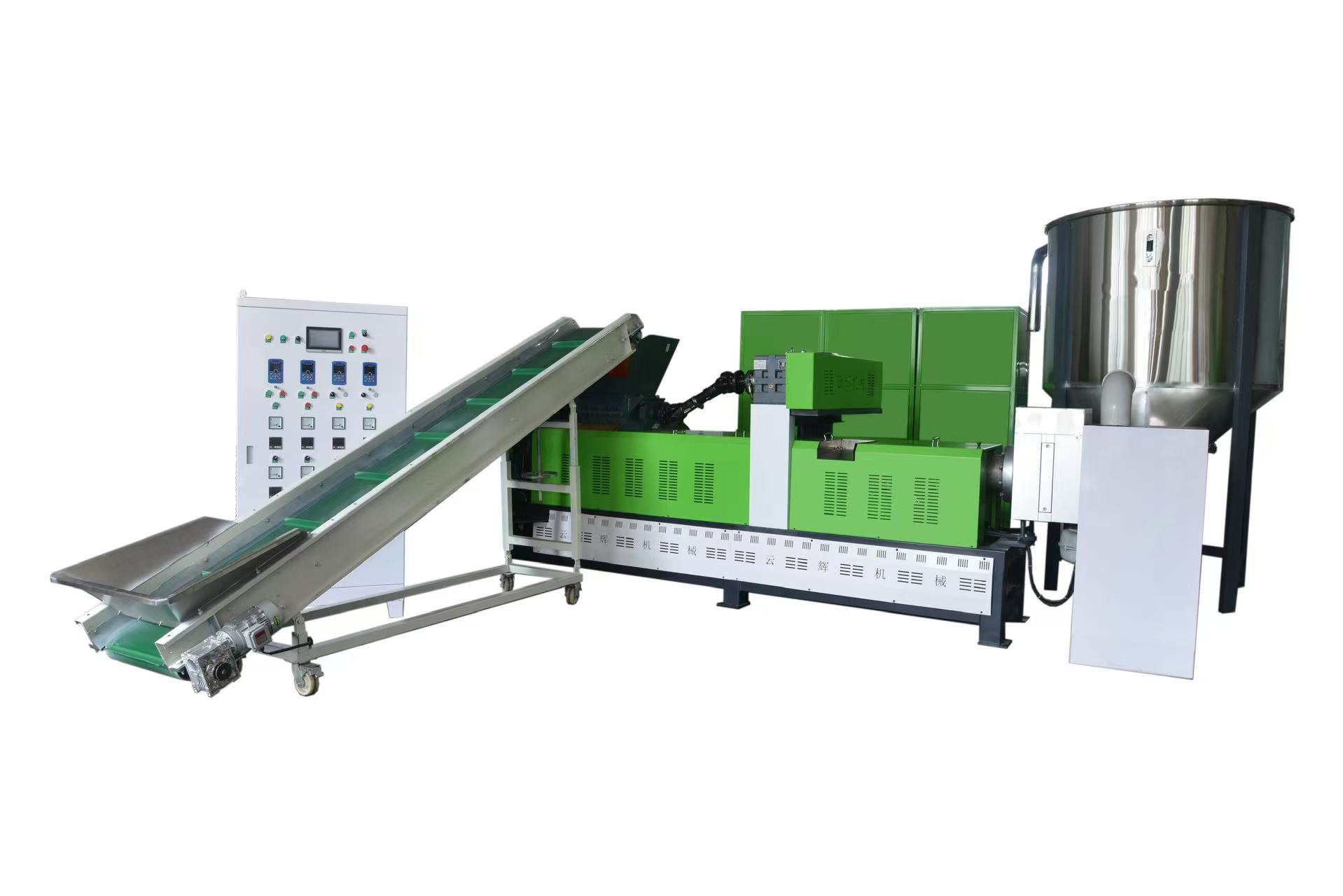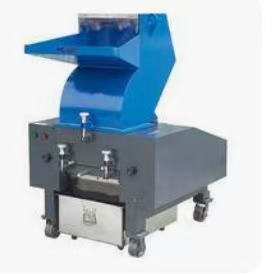Blown Film Production Line: Core Equipment and Technical Analysis for Plastic Film Manufacturing
In the field of plastic processing, the blown film production line is a core equipment system for the large-scale production of plastic films. Using thermoplastic pellets as raw material, it converts pellets into film products with a thickness of 0.01-0.2mm and a width of 0.5-10m through a continuous process of “melting extrusion-blow molding-cooling and setting-winding and finishing”. It is widely used in key fields such as packaging, agriculture, and industry, serving as an important link connecting plastic raw materials to end applications.

1. Core Definition and Positioning
A blown film production line is not a single device, but a complete system where multiple pieces of equipment (including extruders, annular dies, cooling systems, and winding units) work in coordination. Its core relies on the blown film extrusion process to realize the transformation from raw material to film. Its positioning is reflected in two aspects:
• Process Integration Hub: It integrates key links such as plastic melting, physical stretching, and cooling setting. By adjusting parameters like temperature and blow-up ratio, it accurately controls core indicators of the film, such as transparency, tensile strength, and thickness uniformity.
• Application-Adaptable Carrier: It can produce films with different properties according to needs—from highly transparent films for food packaging, to anti-aging agricultural mulch films, and high-strength stretch films for industrial use—covering multiple fields of daily life and industry.
2. Working Principle: Five Steps to Convert Pellets into Film
The working process of the blown film production line follows the rule of “heating and melting-plastic molding-cooling and setting” for thermoplastics. Five consecutive steps ensure stable product quality:
1. Raw Material Pretreatment and Extrusion Melting
• First, plastic pellets (e.g., PE, PP) undergo drying treatment to control moisture content below 0.05% (to avoid bubble formation during melting), and additives such as antioxidants and color masterbatches are added as needed.
• The pretreated pellets enter the extruder. The extruder barrel controls temperature in 3-5 zones (160-200°C for PE melting, 200-230°C for PP melting). The screw melts the pellets into a uniform melt through shearing and kneading, then delivers the melt to the die at a stable flow rate.
2. Die Molding and Air Blowing
• The molten plastic enters the annular die (with a diameter of 50-300mm). After being evenly distributed through the flow channel, it is extruded from the annular die lip to form a tubular blank (film bubble prototype).
• Compressed air is blown into the tube from the air ring above the die, expanding the blank (with a blow-up ratio of 2:1 to 6:1). The blank is stretched horizontally to form a film, and the blow-up ratio directly determines the film’s transverse strength.
3. Cooling and Setting
The high-temperature film bubble (120-180°C) needs rapid cooling to solidify and maintain its shape. The most common method is air cooling: a double-layer air ring blows 15-25°C low-temperature air onto the inner and outer surfaces of the film bubble simultaneously, reducing its temperature to 40-60°C within 3-5 seconds. For high-density films (e.g., HDPE films), water cooling (immersing the film bubble in a 20-30°C water tank) is used to enhance surface smoothness.
4. Defoaming, Flattening, and Trimming
• After cooling, the film bubble is pressed by a defoaming plate to release internal air, turning the tubular film into a flat double-layer film.
• The flat film passes through rubber pressure rollers to eliminate wrinkles, and a trimming device cuts off irregular edges (the trimmed waste is crushed and recycled). This step ensures the film’s width meets preset requirements (e.g., 2m, 5m).
5. Winding
The trimmed film is sent to the winding unit. A tension control system (monitoring tension at 50-200N) and an edge alignment device (with ±1mm positioning accuracy) work together: the tension system adjusts the winding speed to prevent film stretching or loose winding, while the edge alignment system corrects deviations to ensure the film is neatly wound onto a core (paper or plastic tube with an inner diameter of 76mm or 152mm).
3. Key Components and Their Roles
Each component of the production line undertakes a unique function, and their coordination is critical to efficiency and quality:
• Extruder: The “power core” for melting raw materials. Its three-section screw (feeding, compression, metering) ensures full melting, and the temperature control system keeps fluctuations within ±2°C to avoid plastic degradation.

• Annular Die: The “shaping mold” for the film. Its spiral flow channel ensures uniform melt distribution, and micro-adjustment screws on the die lip (every 10-15mm) compensate for uneven thickness.
• Air Ring/Cooling System: The “cooling guarantee” for film solidification. The double-layer air ring controls air volume (0.5-2m³/min) for uniform cooling, while the water tank (for special films) uses a chiller to maintain stable water temperature.
• Winding Unit: The “finishing link” for finished films. It relies on tension and edge alignment systems to ensure the final film roll is neat and usable.
4. Main Application Fields
• Packaging Industry (~60% of output): Produces food-grade PE/PP films for fresh food, snack, and beverage packaging; stretch films (LLDPE) for cargo fixation; and shrink films for product wrapping.
• Agricultural Industry (~25% of output): Manufactures PE mulch films (0.008-0.015mm thick) for soil warming and weed control, anti-aging greenhouse films (≥85% light transmittance), and multi-layer silage films for fodder preservation.
• Industrial/Daily Use (~15% of output): Includes waterproof films for buildings, anti-static films for electronic components, and daily items like plastic bags and tablecloths.
5. Advantages and Typical Challenges
Advantages
• Strong Versatility: Adapts to multiple materials (PE, PP, PVC) and produces films of varying thicknesses/widths with simple parameter adjustments.
• Superior Film Performance: Biaxial stretching (horizontal via blowing, vertical via speed difference) enhances tensile strength by 30-50% compared to cast films.
• High Efficiency & Cost-Effectiveness: Operates 24/7 continuously (daily output 3-8 tons for medium lines) with recyclable waste, reducing costs by 15-20% vs. casting.
Typical Challenges & Solutions
• Thickness Uniformity Control: Use melt pressure sensors (controlling fluctuation within ±1MPa) and frequency-controlled air compressors (stable air pressure) to reduce deviation.
If you need film blowing machines, plastic pelletizers, plastic bag making machines, plastic shredders, or plastic mixers, feel free to contact me.
• Equipment Maintenance: Clean the die every 7-15 days, inspect the screw monthly, and use impurity filters to prevent wear from hard particles.






